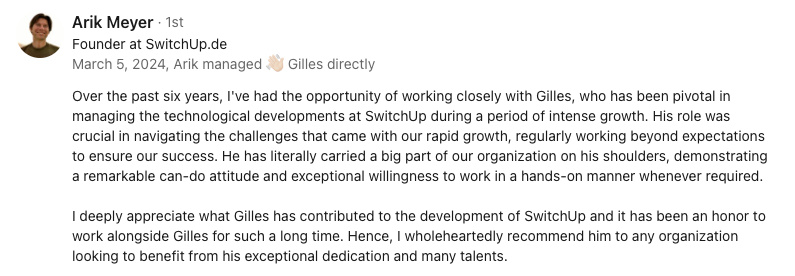Abstract:
Predictive analytics, a cornerstone of modern artificial intelligence (AI) and machine learning (ML), offers businesses unprecedented opportunities to optimize operations, enhance decision-making, and foresee market trends. This technique uses historical data, statistical algorithms, and machine learning to identify the likelihood of future outcomes. It's becoming indispensable in sectors ranging from healthcare, where it predicts patient outcomes, to retail, optimizing inventory based on predictive models. For technology leaders seeking to stay ahead in their domains, understanding and implementing predictive analytics is vital. It not only sharpens competitive edges but also innovates customer experience and operational efficiency. This approach is reshaping industries by enabling more informed and strategic decisions, showcasing the power and potential of AI when combined with insightful data analysis.
Transformative power of predictive analytics in AI
Predictive analytics in artificial intelligence is a groundbreaking force, reshaping how we anticipate and address future challenges. By harnessing historical data and sophisticated machine learning algorithms, this technology can make precise forecasts on upcoming events and trends. Such foresight empowers businesses to make informed decisions, paving the way for strategic advancements and enhanced operational efficiency.
Several sectors are reaping substantial benefits from predictive analytics. In healthcare, it aids in early diagnosis and personalized treatments, dramatically improving patient outcomes. In retail, it enhances inventory management, optimizes pricing strategies, and elevates customer experiences. Additionally, finance sectors employ it to predict market trends and mitigate risks, ensuring robust economic strategies.
Overall, predictive analytics in AI is revolutionizing the decision-making process, transforming traditional methods into data-driven strategies that drive success. By leveraging this potent tool, organizations are not only staying ahead of the curve but are also laying a solid foundation for future growth and innovation.
predictive analytics in healthcare
Predictive analytics is significantly transforming the healthcare industry, providing a myriad of practical applications that benefit both patients and healthcare providers. By analyzing vast amounts of data, predictive models can forecast patient outcomes, optimize treatment plans, and manage healthcare resources with unparalleled efficiency. These advancements not only improve patient care but also streamline operations, ensuring better resource allocation.
enhancing patient outcomes
One of the most impactful applications of predictive analytics is in predicting patient outcomes. By examining historical patient data and identifying patterns, healthcare providers can anticipate potential health issues. For instance, predicting which patients are at risk of developing chronic conditions such as diabetes or heart disease allows for early intervention. Providers can implement preventive measures, thus improving long-term patient health and reducing the burden on healthcare systems.
optimizing treatment plans
Personalized medicine is another area where predictive analytics shines. By analyzing data from various sources, including electronic health records (EHRs), genetic information, and lifestyle factors, predictive models can suggest the most effective treatment plans for individual patients. This personalized approach ensures that treatments are tailored to the patient's unique needs, leading to better outcomes and higher patient satisfaction.
efficient resource management
Predictive analytics also plays a crucial role in managing healthcare resources. Hospitals and clinics can forecast patient admission rates, optimize staff scheduling, and ensure that essential supplies are always available. For example, during flu season, predictive models can estimate the number of incoming patients, allowing hospitals to prepare adequately and avoid being overwhelmed. This proactive approach ensures that resources are used efficiently, reducing waste and enhancing patient care.
real-world examples and case studies
The impact of predictive analytics in healthcare is evident through various real-world examples. One notable case is Mount Sinai Hospital in New York. By leveraging predictive models, they developed a system that identifies high-risk patients who are likely to be readmitted within 30 days of discharge. This system enables healthcare providers to take preemptive actions, such as scheduling follow-up appointments and providing additional support to these patients, reducing readmission rates and improving overall patient outcomes.
Another example is the University of Pennsylvania Health System, which utilizes predictive analytics to improve the management of sepsis, a life-threatening condition. By analyzing patient data in real-time, their system can detect early signs of sepsis and alert medical staff, allowing for prompt intervention and significantly better patient outcomes.
role of big data
These advancements are made possible by the integration of big data. The sheer volume of health-related data generated from various sources, including medical devices, EHRs, and wearable technology, provides predictive models with the necessary information to make accurate forecasts. By continuously updating and refining these models, healthcare providers can stay ahead of emerging health trends and deliver top-notch care.
In summary, predictive analytics is revolutionizing the healthcare industry by enabling data-driven decisions that enhance patient care, optimize treatment plans, and ensure efficient resource management. The integration of big data and advanced analytics has paved the way for these transformative changes, ensuring a brighter future for healthcare.
optimizing retail operations with predictive analytics
Retailers are turning to predictive analytics to transform their operations, using data to make smarter business decisions. By leveraging predictive models, retailers optimize inventory management, personalize customer experiences, and anticipate sales trends. These insights enable companies to stay ahead of the competition, resulting in enhanced customer satisfaction and improved operational efficiency.
inventory management
One of the most significant benefits of predictive analytics in retail is improved inventory management. By analyzing historical sales data, weather patterns, economic indicators, and consumer behavior, retailers can predict future demand with remarkable accuracy. This helps ensure that the right products are available at the right time, reducing the problems of overstock and stockouts.
For instance, predictive models can identify seasonal trends and anticipate product demand during peak shopping periods, such as holidays and special events. This foresight allows retailers to stock up on popular items and avoid excess inventory of less popular products. Additionally, predictive analytics can help retailers manage perishable goods more effectively by forecasting expiration dates and adjusting stock levels accordingly, reducing waste and increasing profitability.
personalizing customer experience
Predictive analytics also plays a crucial role in personalizing customer experiences. By examining customer data, such as purchase history, browsing behavior, and demographic information, retailers can gain insights into individual preferences and tailor their offerings accordingly. This leads to more targeted marketing campaigns, personalized product recommendations, and better customer engagement.
For example, online retailers can use predictive models to recommend products based on a customer's previous purchases and browsing history. This creates a more personalized shopping experience, increasing the likelihood of repeat purchases and customer loyalty. Brick-and-mortar stores can also benefit by using predictive analytics to understand local customer preferences and adjust their product assortment accordingly, ensuring they meet the unique needs of their clientele.
Moreover, predictive analytics can enhance customer service by anticipating issues before they arise. For instance, if a retailer notices a pattern of returns associated with a particular product, they can proactively address the issue, whether it’s by improving product quality or adjusting the descriptions to set better expectations.
forecasting sales trends
Accurately forecasting sales trends is another invaluable application of predictive analytics. By analyzing various data sources, including past sales data, economic conditions, and market trends, retailers can predict future sales with high precision. This allows them to make informed decisions about product launches, marketing strategies, and resource allocation.
For instance, predictive models can identify which products are likely to become best-sellers, enabling retailers to focus their marketing efforts on these items. Additionally, retailers can use these insights to plan promotional campaigns, adjust pricing strategies, and allocate inventory more effectively, ensuring they capitalize on emerging trends and maximize profits.
success stories
Many retailers have successfully harnessed the power of predictive analytics to boost their operations and enhance customer satisfaction. A notable example is Amazon, which uses advanced analytics to personalize recommendations, optimize inventory, and streamline operations. By leveraging data-driven insights, Amazon has created a seamless shopping experience that keeps customers coming back.
Another success story is that of Target, which utilizes predictive analytics to anticipate customer needs and preferences. By analyzing customer data, Target can forecast demand for specific products and adjust their inventory levels accordingly, ensuring they always have the right products in stock. This proactive approach has led to higher sales and improved customer satisfaction.
benefits and challenges
The tangible benefits of implementing predictive analytics in retail are substantial. Retailers can achieve more accurate demand forecasting, improved inventory management, personalized customer interactions, and better sales forecasting, all of which drive operational efficiency and profitability.
However, there are challenges to consider. Implementing predictive analytics requires a significant investment in technology and talent. Retailers must have robust data collection and analysis capabilities, as well as the expertise to interpret and act on the insights. Additionally, there are concerns around data privacy and security that retailers must address to maintain customer trust.
Overall, the adoption of predictive analytics is transforming the retail industry, enabling data-driven strategies that enhance operations and elevate the customer experience. By overcoming the challenges and leveraging the benefits, retailers can maintain a competitive edge and drive long-term success.
embracing predictive analytics for future success
Reflecting on the transformative power of predictive analytics in artificial intelligence, it becomes clear how essential this technology is in revolutionizing various sectors. From healthcare, where predictive models contribute to early diagnosis and personalized treatment plans, to retail, where they optimize inventory management and enhance customer experiences, the impact is both profound and far-reaching.
Predictive analytics enables technology leaders to harness vast amounts of data and make more informed, strategic decisions. This foresight drives innovation, leading to enhanced operational efficiency as businesses leverage data-driven strategies to stay ahead. In healthcare, this translates to better patient outcomes and resource management, while in retail, it means improved inventory control and customer satisfaction.
Several key points stand out in the discussion:
- Enhanced decision-making: Predictive analytics provides companies with the ability to forecast trends and outcomes accurately, allowing for more strategic planning and decision-making.
- Improving operations: From managing hospital resources to optimizing retail inventories, predictive analytics plays a crucial role in operational efficiency.
- Personalization: By understanding individual customer and patient needs, businesses can tailor their offerings, leading to better experiences and outcomes.
- Adapting to trends: Predictive analytics helps organizations adapt to market trends and consumer behavior, thereby maintaining competitiveness.
- Innovation driver: The insights derived from predictive analytics foster innovation, enabling companies to pioneer new approaches and solutions.
To remain competitive and future-ready, embracing predictive analytics is no longer an option but a necessity. The technology offers a substantial edge by enabling proactive measures rather than reactive responses. Companies need to consider how they can integrate predictive analytics into their operations to unlock its full potential.
Think about this: "The greatest value of a picture is when it forces us to notice what we never expected to see" – John Tukey. Predictive analytics allows organizations to see beyond the obvious, uncovering insights that drive success and innovation. By leveraging this powerful tool, businesses can not only understand what is likely to happen next but also shape their strategies to capitalize on these predictions.
As we move forward, consider how predictive analytics could benefit your organization. What data are you currently collecting, and how can you use it to forecast trends, improve operations, and enhance customer satisfaction? The journey to integrating predictive analytics starts with recognizing its potential and taking the necessary steps to implement it.
In conclusion, predictive analytics is a game-changer, providing the foresight needed to make informed decisions and drive success. By embracing this technology, organizations can ensure they remain competitive, innovative, and ready for the future.
You might be interested by these articles:
- Revolutionizing Maintenance: ML and IoT Integration
- Enhancing Cybersecurity with Predictive Analytics
- Predictive Analytics Revolutionizes Customer Engagement





